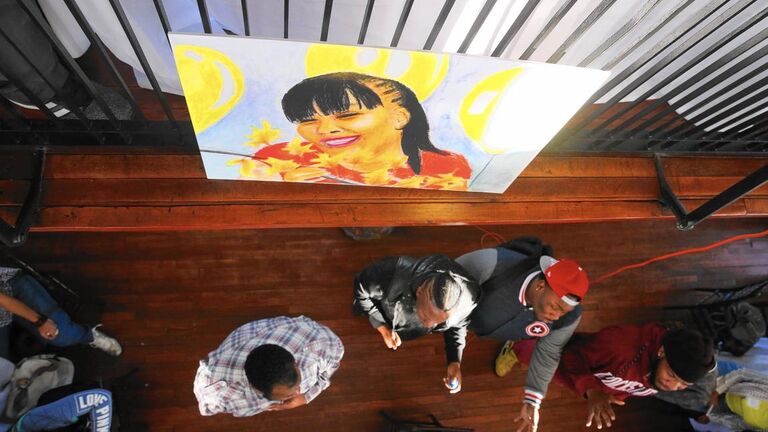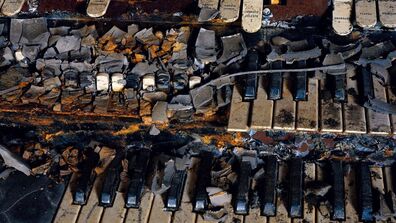
The Chicago Tribune Looks at the Role of Artists in Curbing Violence
In times of political uncertainty, artists often serve as guides that help the broader culture navigate difficult issues. Members of the SAIC community are some of the guides featured in Chicago Tribune’s just-launched series “Chicago Violence: The Arts Respond.” Focusing on artists and art leaders in the Chicago community, the Tribune takes a closer look at how Chicago’s arts community is responding to the epidemic of gun violence plaguing city streets.
In “If art can't fix problems, what good is it?”, artists weigh in on what socio-political functions art serves. Poet and SAIC’s President's Inaugural Distinguished Lecturer Claudia Rankine says: “The unexpected beauty of art is you don't know what it will do. On a certain level, it's like the natural world: It moves you or it doesn't. But it still exists.”
Artist David Legget (MFA 2007) says: “Art saved my life. I grew up in a bad neighborhood (in New England) and many of the role models were criminals. Art was an escape from the dangers in front of me.”
SAIC faculty member in the Department of Fashion Design, Cheryl Pope (BFA 2003, MDes 2010) describes her work at SAIC’s off-campus facility Nichols Tower, which overlooks Homan Square. Many of the city’s shootings have taken place on the West Side, but until recently, Homan Square was also host to Freedom Square, the tent city that grew outside the Square police station as a protest against police misconduct.
Pope tackles a daunting list of artistic ventures including organizing a monthly arts meet-up where she and other SAIC artists plan projects with locals at Nichols Tower. “I'm more interested in creating platforms for people," she says. “People here are creating art they want to see. This one young guy, he told me all he does is create. 'We're bored out of our minds, creating stuff is all we have.' So, I keep hearing people talk about putting guns down and putting an opportunity in their hands. No, a gun is an opportunity. But it's not the only thing to grab. If it's respect, they'll take that.”
Marline Johnson will be SAIC’s next artist-in-residence at Nichols Tower. In “From young women to famed painters, art deals with pain”, she describes being program coordinator for Girl/Friends Leadership Institute. Through art, Girls/Friends empowers teen women to gain leadership skills and challenge gender-based violence and structural disenfranchisement.
Sculptor Garland Martin Taylor (BA 2005, MA 2007) describes being inspired by 19th-century Black political cartoonist Henry Jackson Lewis. From stuffing bullet casings with snippets of his own hair to creating a larger-than-life gun stamped with the names of victims 20-and-under killed by gun violence in his Hyde Park neighborhood, Taylor strives to make work that address the violence facing Black Americans.
For the story, "Spike Lee Spike Lee and 'Chi-Raq' took on violence and flopped. What now?" Film, Video, New Media, and Animation faculty member and alum Kevin B. Lee (MFA 2015) talks about the important role moving images can play in informing the public. Lee says, "This city holds all sorts of potential for filmmakers. There's something radical going on now, with so many people showing us what's unfolding in their world, in real time. Now it's time for filmmakers to find ways to break through the boundaries the city seems to naturally construct for itself. But it involves leaving your comfort zone."
The breadth of SAIC community members approached by the Tribune highlights SAIC’s symbiotic relationship with Chicago. SAIC strives to train artists and scholars to engage with their communities through meaningful work informed by experience, research, and critique. In that spirit, SAIC trains leaders.
